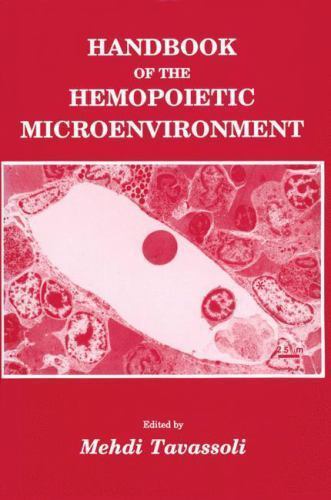Picture 1 of 1

Stock photo

Picture 1 of 1

Stock photo

Contemporary Biomedicine Ser.: Handbook of the Hemopoietic Microenvironment by Mehdi Tavassoli (1989, Hardcover)

Great Book Prices Store (349228)
97.4% positive feedback
Price:
$123.30
Free shipping
Returns:
14 days returns. Buyer pays for return shipping. If you use an eBay shipping label, it will be deducted from your refund amount.
Condition:
Oops! Looks like we're having trouble connecting to our server.
Refresh your browser window to try again.
About this product
Product Identifiers
PublisherHumana Press
ISBN-100896031470
ISBN-139780896031470
eBay Product ID (ePID)481988
Product Key Features
Number of PagesXxii, 454 Pages
Publication NameHandbook of the Hemopoietic Microenvironment
LanguageEnglish
Publication Year1989
SubjectHematology
TypeTextbook
Subject AreaMedical
AuthorMehdi Tavassoli
SeriesContemporary Biomedicine Ser.
FormatHardcover
Dimensions
Item Weight66 Oz
Item Length9.3 in
Item Width6.1 in
Additional Product Features
Intended AudienceScholarly & Professional
LCCN89-015497
Dewey Edition20
Series Volume Number9
Number of Volumes1 vol.
IllustratedYes
Dewey Decimal612.4/91
SynopsisIn 1868, Ernst Neumann recognized that blood cells re quire continuous replenishment during postnata1life. Before him, the assumption was that cells of the blood, like nerves once formed in the embryo, remain in the body throughout life. Neumann also recognized that this process occurred within the bone marrow, because this tissue provided a fa vorable environment for proliferation and differentiation of blood cell precursors. Vera Danchakoff, the Russian embryologist working in the US, in 1916 made an analogy to the soil and the seed. Bone marrow forms the soil, providing a favorable environment for the growth of seed, the hemopoietic stem cell, and other progenitor cells. Imagine in the remote past a heap of similar tree seeds. These seeds develop in our moderate climate into a tall and many branched tree. Suppose the wind bears a part of the seeds away and brings them to a land possessing different environmental conditions, we will say the arc tic lands. There the seeds may develop but they may pro duce trees no higher than our moss., In 1868, Ernst Neumann recognized that blood cells re- quire continuous replenishment during postnata1life. Before him, the assumption was that cells of the blood, like nerves once formed in the embryo, remain in the body throughout life. Neumann also recognized that this process occurred within the bone marrow, because this tissue provided a fa- vorable environment for proliferation and differentiation of blood cell precursors. Vera Danchakoff, the Russian embryologist working in the US, in 1916 made an analogy to the soil and the seed. Bone marrow forms the soil, providing a favorable environment for the growth of seed, the hemopoietic stem cell, and other progenitor cells. Imagine in the remote past a heap of similar tree seeds. These seeds develop in our moderate climate into a tall and many branched tree. Suppose the wind bears a part of the seeds away and brings them to a land possessing different environmental conditions, we will say the arc- tic lands. There the seeds may develop but they may pro- duce trees no higher than our moss.
LC Classification NumberRC633-647
All listings for this product
Be the first to write a review




















